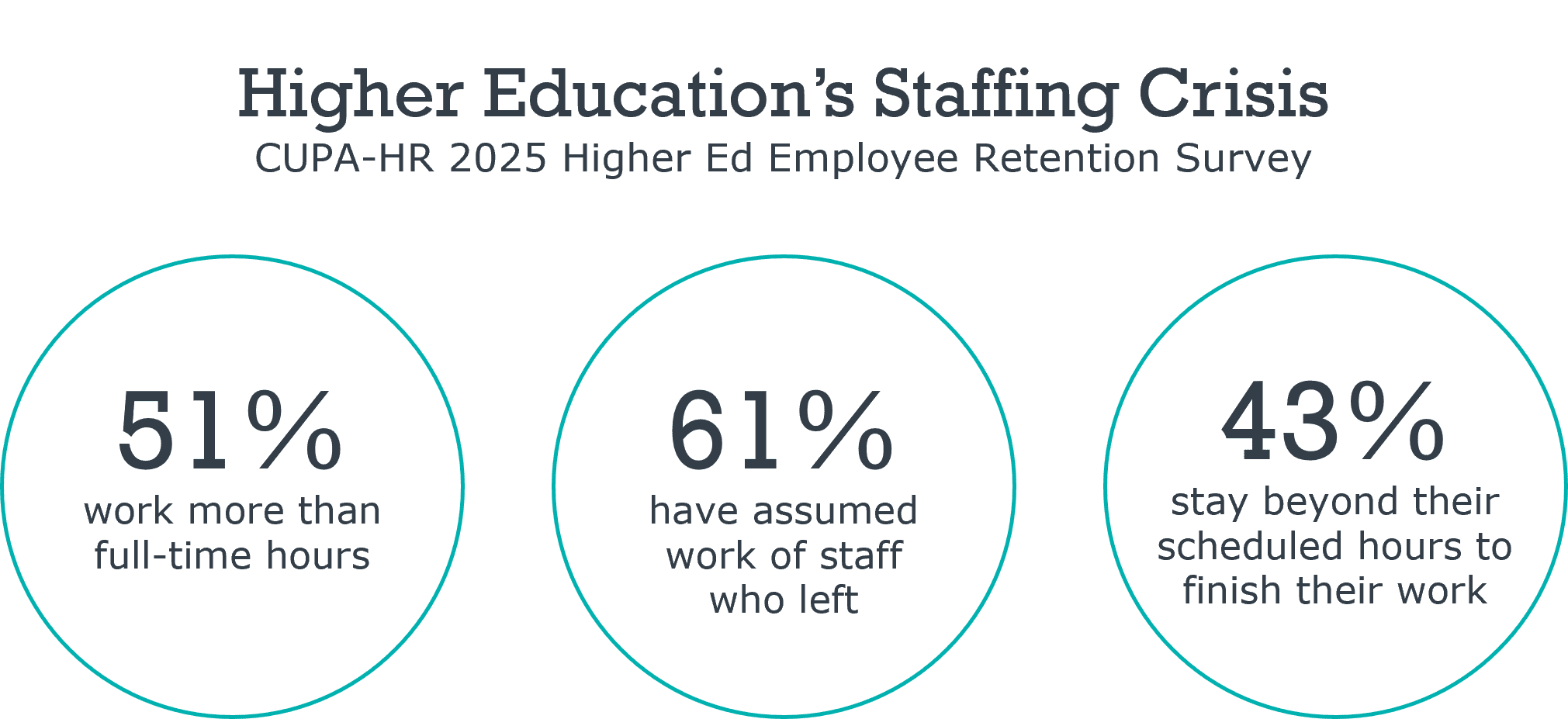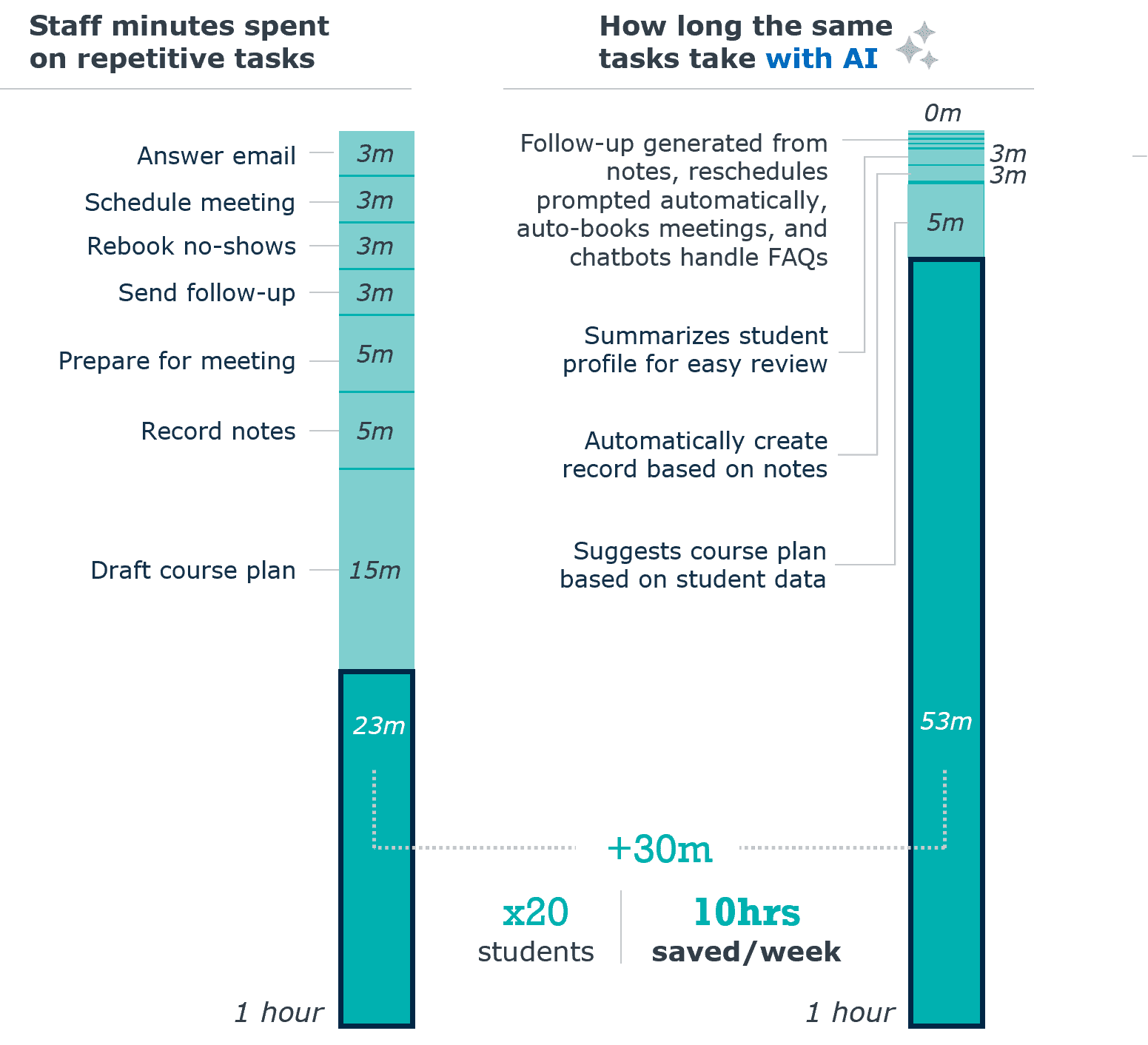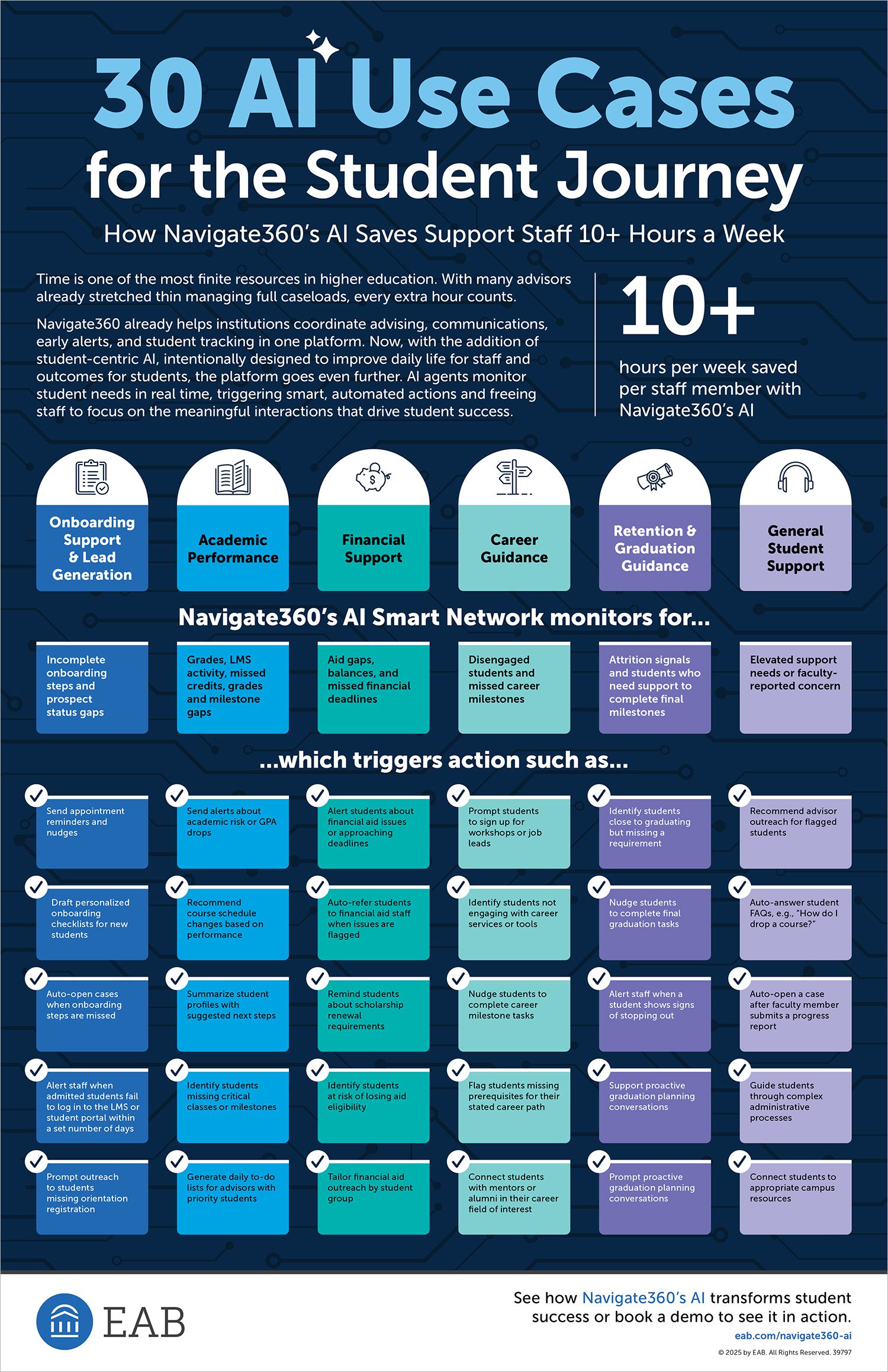Three lessons from 1,200 student success leaders on higher ed’s future
CONNECTED has always been my favorite time of year for the Student Success Collaborative, and this year’s gathering in Orlando was no exception. I left feeling energized and reminded of why the work of student success matters so deeply. But across keynotes, workshops, and hallway conversations, some version of the same question kept surfacing: How do we keep doing this work we love when the ground beneath us won’t stay still?
Despite the uncertainty our sector faces, CONNECTED25 was a powerful reminder of what’s possible when innovation and empathy come together to solve shared challenges in student success. Here are three lessons from CONNECTED25 to help your campus navigate change with purpose and confidence.
1. AI offers an opportunity to address higher ed’s staffing crunch.

Everywhere I turned, campus leaders spoke about doing more with less. Advisors, faculty, and staff are covering unfilled positions, taking on added responsibilities, and working overtime. At the same time, we’re supporting a new, digital-first generation of students with more complex support needs and higher expectations. The result is predictable: staff are burnt out, students fall through the cracks, and neither can thrive.
That’s where AI offers an opportunity. EAB analysis shows that advisors spend up to 10 hours each week on routine tasks that Navigate360’s AI can manage, including scheduling appointments, drafting reminders, summarizing notes, and routing students to the right resources. If AI takes on those administrative burdens, advisors can refocus on what truly drives outcomes: helping students navigate their toughest challenges.

I think many of us in higher education approached AI with caution, and that was the right instinct. Student success work depends on trust, judgment, and empathy, none of which can be automated. But many sessions at CONNECTED25 helped cut through the hype and showed us what AI can do right now to make people’s jobs easier. Partners were reassured by EAB’s product roadmap sessions, which highlighted how Navigate360’s AI tools are grounded in more than 20 years of research and purpose-built for higher education. And they quickly became excited after seeing AI built directly into the workflows they already use—which means less repetitive work, faster follow up, and outreach to students that is more personal, without any additional training.
“My top-of-mind issue coming out of CONNECTED25 is to focus on adding new technology, such as AI elements, to maintain a focus on the human side of student success.” – CONNECTED25 Attendee
See AI in Action Across the Student Journey
Explore EAB’s latest infographic to see how AI connects insights across systems to flag needs early and improve outcomes.

2. Outcomes-based funding could be a chance for higher ed to reaffirm its promise.
Another topic top of mind for CONNECTED25 attendees was the impact of shifting federal policy on higher education. In his keynote, Ed Venit outlined new outcomes-based funding models and emphasized that the push for measurable outcomes is not just coming from policymakers. It reflects a rare point of agreement among students, families, employers, communities, and elected officials who all want proof that college clearly contributes to economic growth and upward mobility. He explained that this is why the current mandate, which is relatively lax, should be viewed as the floor, not the ceiling.

Attendees shared their concerns about these new models. It’s another layer of pressure for leaders who are already juggling a lot, and there are valid questions about whether any formula can fully capture the nuances of student success. At the same time, sessions on advancing social mobility and the conversation on navigating federal policy shocks showed how these new mandates can also create opportunity. Speakers drew a direct line between improving outcomes and rebuilding public confidence in higher education, arguing that the same work that helps institutions perform under new funding rules can also help them tell a stronger story about their impact.
When leaders can point to more graduates in good jobs, better results for low-income and first-generation students, and stronger connections between programs and local economies, they are not just meeting accountability expectations. They are pushing back against the idea that college is too expensive or not worth it and reaffirming higher education’s promise of opportunity. Attendee’s walked away with the understanding that getting ahead of these expectations now may not stop future mandates altogether, but it does put campuses in a stronger position to shape them rather than simply react to them.
3. The human core of student success is what matters most
After two days of talking about research, data, and technology, CONNECTED25 ended by bringing us back to why we go into this work in the first place. In his keynote, Steve Pemberton reminded us that we rarely know who is drawing strength from our presence, but that our decision to keep showing up can change a student’s life.
“We never really know who we’re touching, who we’re impacting, who draws strength from our presence.” – Steve Pemberton, Managing Director of Seramount and author of The Lighthouse Effect
ConnectED Stories, my favorite CONNECTED tradition, was a clear reminder of the human side of student success. Four partners shared personal experiences and passion projects that keep them grounded in the work. Carmine Biancamano from Gettysburg College talked about how something as simple as gaming became a bridge back to joy and, ultimately, a better way to connect with students who do not always feel like they fit the mold. Nicole Carr from the University of South Alabama shared how investing in staff coaching and emotional intelligence helped her team support “the anxious generation” and care for their own well-being at the same time. Dawn Matthews from North Carolina Central University showed how the Community Cultural Wealth model can reframe first-gen and students of color not through a deficit lens, but as students who bring rich cultural capital that campuses need to honor. And Michael Preston from Texas State University spoke candidly about grief, what it means to keep doing this work after losing a close colleague, and why we cannot forget staff humanity when we talk about student success.
Higher ed’s future will depend on you
Student success is still deeply human. Data and tools can show where support is needed, but it is advisors, faculty, and staff who notice the small clues, ask the hard questions, and stay with students through their highs and lows. That was my biggest takeaway from CONNECTED25. As we bring new AI capabilities online and respond to new policy pressures, the future of student success will depend on people who use those tools to listen, encourage, and keep showing up for students.

More Blogs

Four signs it’s time to break up with your student CRM

What are students asking university chatbots?
